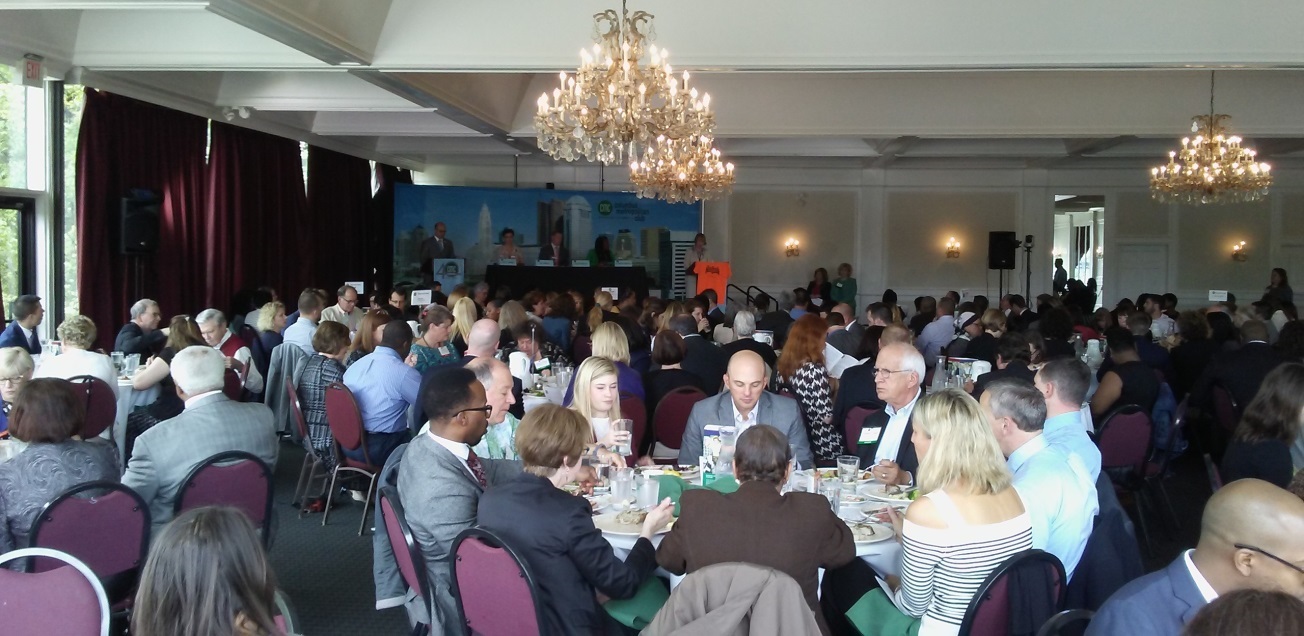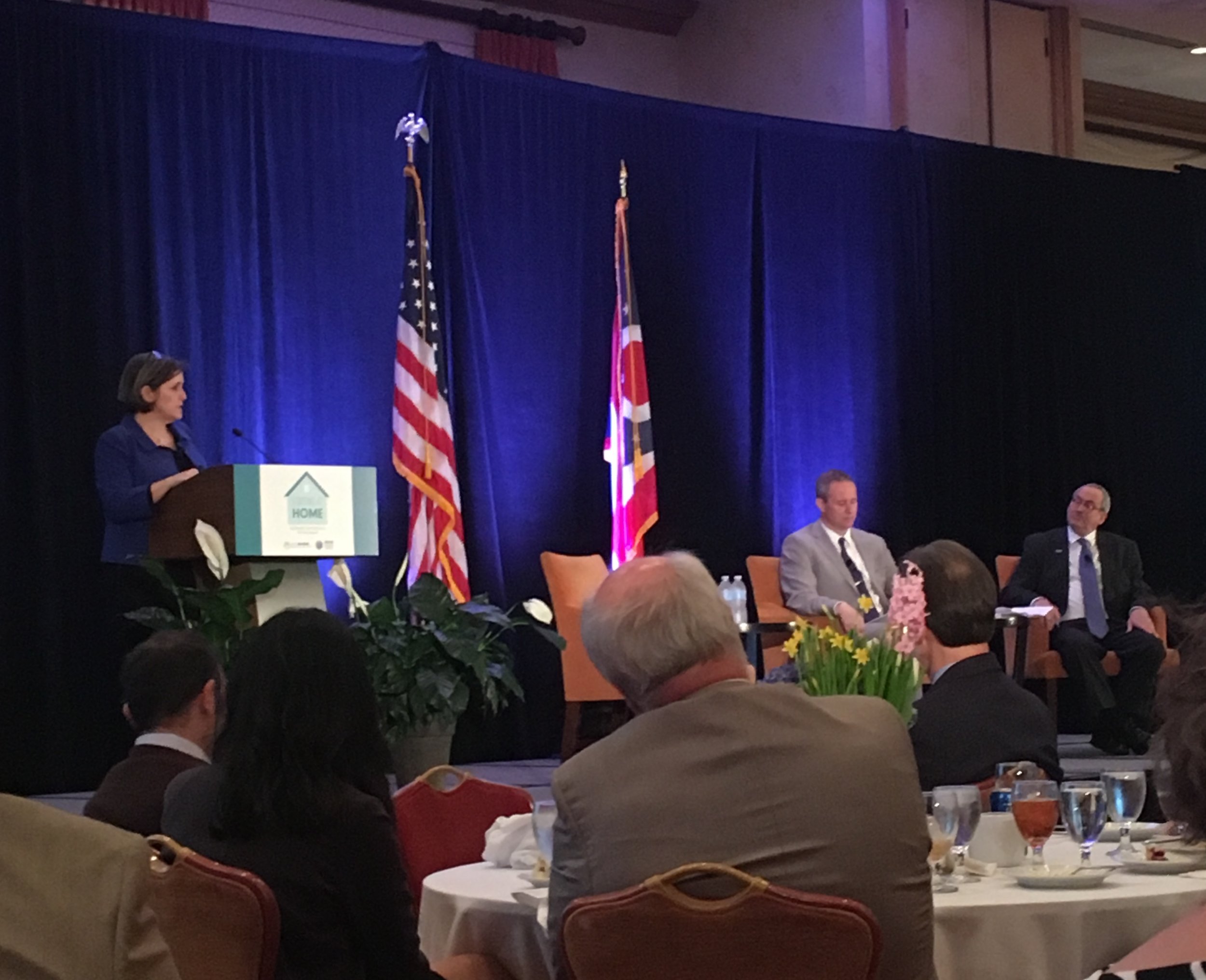By GOPC Project Associate Alex Highley Recently, Greater Ohio Policy Center (GOPC) staff attended the Columbus Metropolitan Club’s (CMC) session Highest Eviction Rate in Ohio, Consequences? During the luncheon panelists explored the topics of affordable housing and the high rate of eviction in central Ohio, often referring to research in “The Columbus and Franklin County Affordable Housing Challenge: Needs, Resources, and Funding Models”, a report GOPC recently completed in collaboration with the Affordable Housing Alliance of Central Ohio (AHACO). Panelists for the session comprised of moderator Dan Sharpe of the Columbus Foundation, Brad DeHays of Connect Realty Mid-Ohio Contracting Services, Elfi Di Bella of the YWCA Columbus, and Stephanie Hightower of the Columbus Urban League.
The luncheon began with Sharpe explaining that Franklin County is the state leader in evictions while discussing some of the community development efforts to support families who are at risk of being evicted. To provide context to the housing situation, Sharpe noted that according to the AHACO report informed by GOPC’s research, a household needs to earn $15.98 an hour or $33,238 annually, at a full-time, year-round job in order to afford a two-bedroom apartment at Fair Market Rent. With the rate of poverty population growth three times faster than the rate of overall population growth in Franklin County between 2009 and 2014, residents are finding housing costs increasingly burdensome.
According to the AHACO report, there is a glaring shortage of 54,000 affordable housing units in the region, which, as DeHays explains, is a direct contributor to the high rate of evictions in Franklin County. Often, the first step to an eviction is an unfortunate event such as illness or a flat tire, and then suddenly problems spiral out of control when bills rack up and families cannot pay their monthly rent. While Hightower was keen to stress that there are often a wide variety of reasons people are evicted, the root of the problem is that one in three families in Columbus live paycheck-to-paycheck, and therefore struggle to afford basic costs such as paying rent. 354 families are evicted in Central Ohio every week and to compound this problem, a portion of them may later end up homeless, often in part because of the stigma and barriers which a record of eviction brings to future housing opportunities.
In alignment with models analyzed by GOPC as part of the AHACO report, Hightower points to incentivizing developers to create units for low- to middle-income people as a potential tool for expanding affordable housing. Speakers at the session also suggested strengthening the Section 8 voucher program and simplifying the Low Income Housing Tax Credit (LIHTC) program, along with improving education for landlords and tenants. GOPC supports Hightower’s emphasis on the importance of building capacity of organizations currently working on affordable housing issues and minimizing duplication by coordinating efforts. With a large number of nonprofit, public, and private groups in Columbus working to expand affordable housing, it is important to maximize the work of leaders currently working in this policy arena and to ensure that future interventions are done collaboratively.
For more information, including GOPC’s exploration of affordable housing models from around the country, read the AHACO report: The Columbus and Franklin County Affordable Housing Challenge: Needs, Resources, and Funding Models








